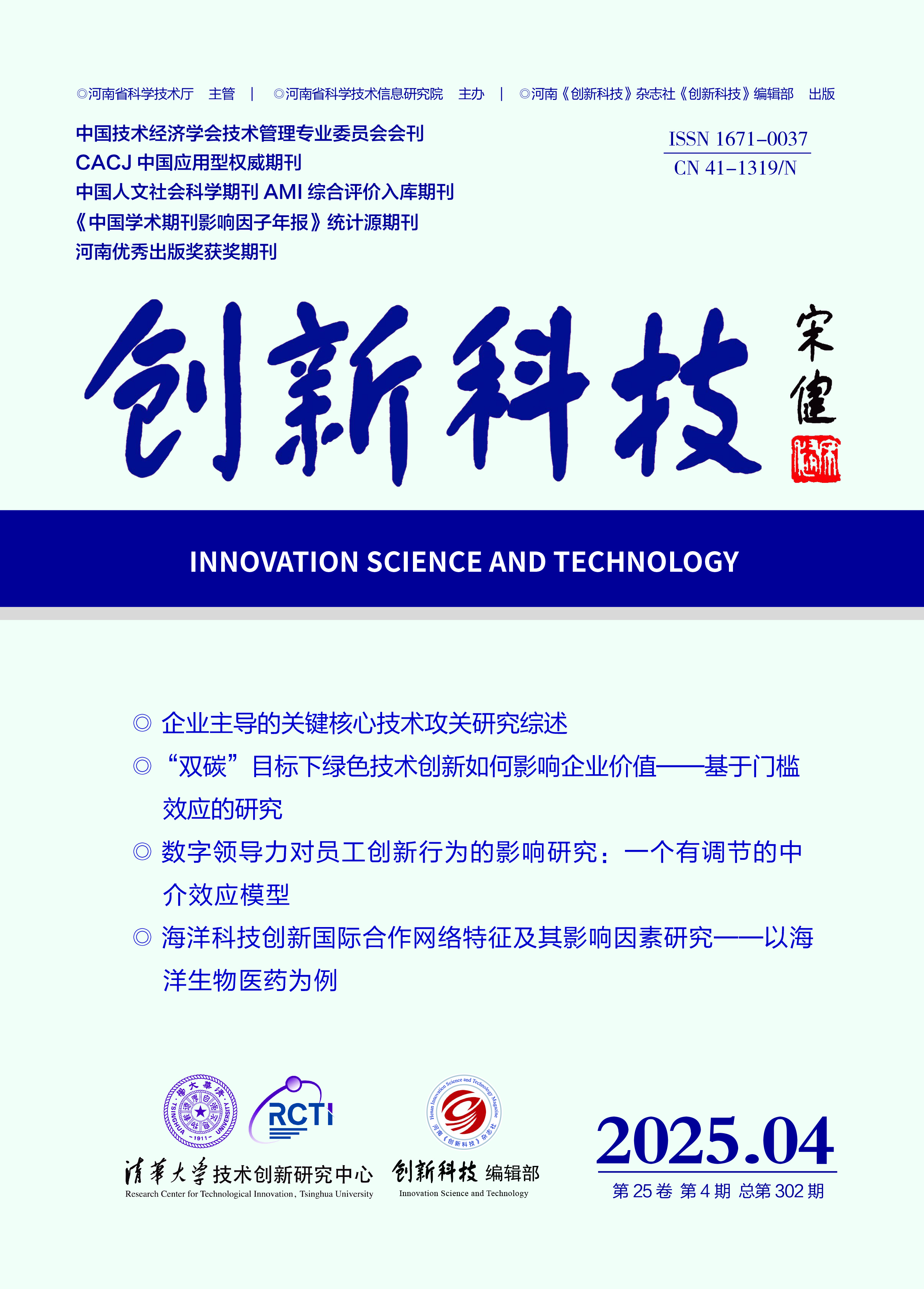INNOVATION SCIENCE AND TECHNOLOGY
Quick Search

All publication are peer-review
Peer review will take the from of double-blind review Judge objectively and impartially
There is no conflict of interest for the reviewer
Review articles shall be kept strictly confidential prior to publication
Viewpoint
The Mystery and Implications of Hangzhou"Six Little Dragons" Rise in Innovation from the Perspective of New Quality Productivity Cultivation
Yin Ximing1,2 , Chen Jin2,3 , Wu Peiqi1 , Zhou Qing4 , Guo Bin5 , Wang Liying6 , Xie Wenxin7 , Wen Jia7 , Wu Bei8 , Shi Jiahao8 , Dong Lilu8 , Zhu Xueyan9 , Zhu Bingsheng9
(1.School of Management, Beijing Institute of Technology, Beijing 100081, China; 2.Research Center for Tech⁃ nological Innovation, Tsinghua University, Beijing 100084, China; 3.School of Economics and Management, Ts⁃ inghua University, Beijing 100084, China; 4.Experimental Center of Data Science and Intelligent, Hangzhou Di⁃ anzi University, Hangzhou 310018, China; 5. School of Management, Zhejiang University, Hangzhou 310058, China; 6. China Institute for Small and Medium Enterprise, Zhejiang University of Technology, Hangzhou 310023, China; 7.School of Management, Zhejiang University of Technology, Hangzhou 310023, China; 8. School of Management and E-business, Zhejiang Gongshang University, Hangzhou 310018, China; 9.Shanghai Institute for Science of Science, Shanghai 200031, China)
Abstract: Currently, Hangzhou "Six Little Dragons" — DeepSeek, Unitree Robotics, Yunsh⁃ enchu Technology, BrainCo, Koolab, and Game Science — have set off a hurricane in the global science and technology circle, demonstrating to the world the strong strength and huge potential of China's scientific and technological innovation. The rise of these enterprises highlights the first-move advantages of Hangzhou in cultivating new quality productivity. Within the context of accelerating the deep integration of technological and industrial innovation, achieving highlevel self-reliance in science and technology, and building a technologically powerful nation, it is of great significance to investigate how to replicate Hangzhou's innovation model in more cities across China. Yin Ximing et al. explored how Hangzhou "Six Little Dragons" utilizing cutting-edge technologies including AI, robotics, and brain-computer interfaces to advance new quality productivity through ecological innovation models. They analyzed the strategic value of science and technology pioneering enterprises. Zhou Qing focused on new-type laborers, advanced tools, modern labor resources, and optimized combinations, further suggesting practical avenues for technological innovation in Zhejiang private enterprises through exploring cases of the "Six Little Dragons". Based on the development experience of Hangzhou "Six Little Dragons", Guo Bin provided a direction for private enterprises to think about high-quality development in terms of seizing the high-quality growth opportunities given by the times, establishing micro-mechanisms for innovation-driven high-quality development, and creating regional innovation ecosystems that enable high-quality development. Taking DeepSeek as a case, Wang Liying et al. discussed the role of open source innovation as an engine for the development of new quality productivity, analysed its three mechanisms of technological modularity, organisational networking and ecological economy, built a distributed collaborative innovation ecosystem, enhanced the resilience of the industrial chain, and providea a practical path for China to break through the technological embargo and realized scientific and technological self-reliance and self-improvement. Wu Bei et al. analyzed DeepSeek's paradigm of technological breakthroughs, open-source collaboration, and industrial empowerment, further providing insights for building modern industrial systems. Zhu Xueyan et al. uncovered the practical experiences underlying the rise of the "Six Little Dragons", including factor aggregation, government services, and ecological synergy, pointing out the technical, market, and governance logics of new quality productivity cultivation, eventually providing implications for broader applications.
Key words: new quality productive; science and technology pioneering enterprises; Hangzhou "Six Little Dragons"; innovation leadership; science and industry integration; open source innovation